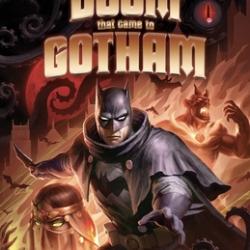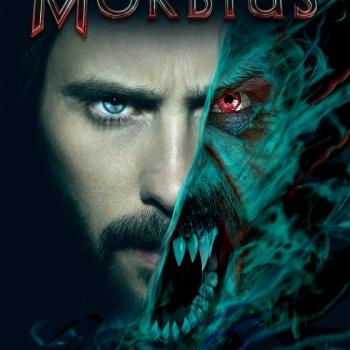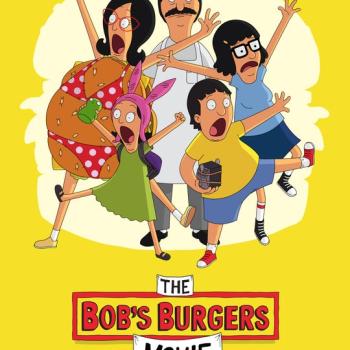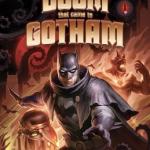Review of Dallas Buyers Club, Directed by Jean-Marc Vallee
By ELIZABETH WHYTE
Before you see Dallas Buyers Club, rid yourself of any ideas of Matthew McConaughey you may have picked up from his repertoire of stupid romantic comedies, Matt Damon’s impersonation of him, or his receipt of the dubious designation “Sexiest Man Alive” by People Magazine in 2005. Otherwise you will, as I did, waste too much of the movie thinking: “I can’t believe Matthew McConaughey is that skinny!” He lost 40 pounds for the film, and as a result, really does look like lives in a dirty trailer and makes a habit of popping pills, snorting crack, and drinking all at the same time, as he does at the film’s beginning.

When we first see McConaughey’s character, Ron Woodroof, he is a foul-mouthed, hard-partying, fight-picking cowboy who engages in a lot of grunt-filled, unprotected sex just outside the rodeo arena. He spits out homophobic slurs and punches a cop to avoid getting beat up by a gaggle of men he’s scammed. Then an accident at his electrician job puts him in the hospital, and doctors give him the bad news: He has AIDS, and he has 30 days to live. Have you had homosexual sex? the doctor asks him. Woodroof, in disbelief, spits out some more gay slurs and rushes out of the hospital.
But then reality of his symptoms kick in. He’s weak; he faints; he can’t participate in trailer-park orgies like he used to. He starts researching his disease in the library. But this is the 1980s, and help for AIDS patients is scarce. He steals a drug being tested at the hospital, but he only gets worse. Finally he loads his gun and his few possessions into his car and heads to Mexico, where he finds a doctor who treats him with vitamins and drugs not available in the U.S. Woodroof gets better. And he also realizes that the Dallas hospital is filled with gay AIDS patients who would pay a lot of money to get better. Thus begins his Dallas Buyers’ Club, in which gay patients line up outside his hotel to pay a monthly fee for the regimen of drugs Woodroof obtains from Mexico, Japan, and other far-flung places. Along the way he befriends a transsexual, Rayon, played by Jared Leto, who wants desperately to be a beautiful woman and who can’t kick a drug addiction, despite dying of AIDS. It’s a heart-rending film, and it’s also based on a true story. Ron Woodroof was a real person, and McConaughey does him justice.
The weight loss isn’t the most impressive thing about McConaughey in this movie. His performance is superb. He blends his usual likable spark with an earnest, captivating portrayal of a dying man eager to live. He and Leto, who also lost tens of pounds and plays his part to perfection, are easily shoo-ins for Oscar nods this year. Jennifer Garner, who plays a Dallas doctor and is an accomplished actress herself, is flat and bland next to the two men.
This movie is about the AIDS crisis, but it is also about the spiritual transformation offered by the common grace of suffering. Ron falls short of redemption, at least in the confines of the film, but in the presence of outcasts, humbled by his physical deterioration, he finds kindness, the joy of fighting for others, and compassion. Pre-diagnosis Ron is hate-filled and happy to fit in with friends who disparage others to boost their own macho ego. Post-diagnosis Ron has a softer heart and is willing to do battle with FDA bureaucrats to help others live. He wheels his IV to a meeting of AIDS patients and hands out flyers with vitamin information, talking over the government officials who are trying to get people to sign up to test a poisonous drug. In another scene, Ron bumps into an old rodeo pal at the grocery store. He introduces Rayon, but the old friend won’t shake Rayon’s hand. Rayon is content to shrug him off, but Ron puts the guy in a headlock and forces him to offer his hand.
The movie also poignantly captures the heartbreak of AIDS — the ignorance, the fear, the greediness of drug companies, the helplessness of doctors, the rough lifestyles of poverty and drugs that some patients like Ron were caught up in. In addition to slamming the FDA and the very idea that government should regulate individual health choices, the film also offers a subtle critique of the church in two scenes. In one, Ron looks as if he is praying in a cathedral, surrounded by candles, asking God to help him find a way to live longer. The camera pulls back, and he is in a strip club, not a church. But it is there he finds an answer to his prayer: A hospital worker agrees to slip him drugs when he takes out the trash. A seedy red-light joint is where God meets Ron. Is that not a call to the church to get out of the temple and start having dinner with the gluttons and tax collectors, as Jesus did?
In another scene, Rayon shows up at his estranged father’s office to ask him for cash after the IRS confiscates Ron’s supply of drugs. His father leans back in his chair and says, “God help me.” Rayon replies: “He is helping you. I have AIDS.” His comment echoes the refrain sung by fundamentalist preachers of the ‘80s: AIDS is God’s punishment for homosexuals. The film reminds viewers again and again that Ron and Rayon are lost, suffering, and in need of divine mercy, though in the movie at least, they do not find it. And one wonders: In real life, was there a preacher willing to tell them about the grace that they, and all of us, so desperately need? “It is not the healthy who need a doctor, but the sick.”












